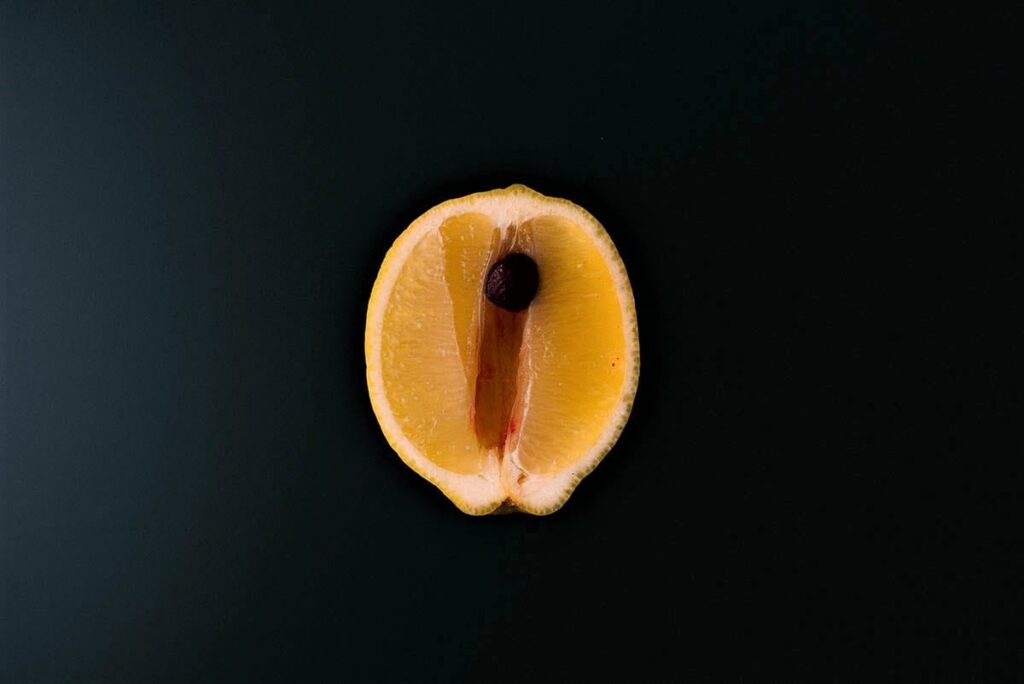When you get down to it, the clitoris isn’t that perplexing. It’s there… it exists… you feel its presence frequently and it does a great, even wonderful job of transporting you to paradise!
In reality, there’s nothing confusing about its physical appearance or it’s singular purpose.
But acknowledging the existence of this indispensable body part hasn’t always been standard practice – not even among doctors and scientists.
Historical accounts of the clitoris are full of horrifying ignorance and scorn. The Malleus Maleficarum, a 1486 guide for finding witches, suggested the clitoris was the “devil’s teat.”
Hence, for a long time, every woman in Medieval Europe was somehow in peril of being burned at the stake simply for having one!
In the 16th century, Andreas Vesalius, one of the most influential anatomists of his era, confidently asserted that the clitoris was not found in “healthy women.”
And in Victorian England, women thought to be suffering from “hysteria” were sometimes subject to clitoridectomies – a barbaric practice still happening in some cultures.

What They Never Taught You in School
Sadly, still too much of this kind of ignorance persists today. Jane Chalmers, a clinician and physiotherapy researcher at the University of Western Sydney, says the subject of the clitoris is still routinely avoided or ignored in schools.
“Several major medical textbooks omit the clitoris, or label it on diagrams but have no description of it as an organ,” Chalmers says. “This is in great contrast to the penis that is always covered in-depth in these texts.”
There then lies the rub for a great many women – and men – today. For a vast majority of adults all over the world, sex education was completely silent on the subject of the clitoris.
“These are ovaries, this is a penis, try not to get an STD,” was the extent of the sex education most of us received while growing up.
This means there’s a whole lot to know about the clitoris that we never learned in health class. Fortunately, more and more educators and researchers these days are determined to fix that problem.
Below are seven facts about the clitoris that your teachers never dared teach you in school.
1. The clitoris has always been a mystery, even for women.
It wasn’t until 1981 that the Federation of Feminist Women’s Health Clinics produced anatomically correct images of the clitoris. Published in A New View of a Woman’s Body, the images were part of a broader effort to provide women with accurate information to support their health.
In the ensuring years up until 1998, most textbooks only illustrated the external glans – that is, the bump or hooded tip. That year, Helen O’Connell, an Australian urologist, undertook a series of MRI studies of the clitoris that revealed something that many found quite fascinating.
O’Connell’s studies showed that the clitoris is actually a complex, powerful organ system composed of eighteen parts. Two thirds of those parts are interior.

2. It’s brimming with sensitive nerves.
The clitoris is the most nerve-rich part of the vulva, says Debra Herbenick, PhD, a sexual health educator from The Kinsey Institute. The glans alone brims with about 8,000 nerve endings, making it an incredible dynamo of sexual pleasure.
With twice as many nerve endings as the penis, this fascinating erogenous zone then spreads the pleasure to 15,000 other humming nerves in the pelvis.
This explains the overwhelming feeling of bliss that seems to take command of a woman’s body when she achieves orgasm.

3. It can swell by as much as 300% when engorged.
Clitorises range from seven to 12 centimeters in length and will swell in size by as much as 300 percent when a woman is aroused. This does not happen all at once. The clitoris gradually increases in size as she approaches climax.
When at rest, the “arms,” or corpora cavernosa, of the clitoris’ body extend straight out towards the thighs. When a woman is aroused, they curl around and give her internal anatomy a little hug.

4. Its sole purpose is sexual pleasure.
The clitoris is crucial to a woman’s orgasm, says Jim Pfaus, PhD, professor and sex researcher at Concordia University in Montreal. In fact, it’s the only known body part with the sole purpose of sexual pleasure.
Yet one in 10 women has never had an orgasm. Surveys further suggest that up to one half of women who do experience orgasm are not satisfied with how often they reach it.

5. G-Spot and penetrative orgasms are clitoral.
Both stimulate internal parts of the clitoris. While G-spot and penetrative orgasms might seem distinct from each other, both require the stimulation of the clitoris.
This fact has been largely obscured by historical heteronormative studies of the female anatomy. Those studies have assumed that the female orgasm requires stimulation by a penis.
One way is not better than another way, Pfaus says. Every woman is different, and orgasms are about exploring possibilities and discovering what a woman enjoys best.

6. Size doesn’t matter.
Just like penises, clitorises come in all shapes and sizes. And – again, just like the penis – size doesn’t matter when it comes to sexual satisfaction.
Since the brain is the main sex organ, the genitals are simply the receptors of pleasure. In short, the clitoris has to do with visual, tactile, and oral stimulation. The brain does the rest.

7. The clitoris does not age – but it does grow as you age.
The truth is, an 80-year-old clitoris looks and functions the same as a 20-year-old one. But it does keep growing due to a change in hormone levels after menopause.
So, don’t be alarmed if you begin to notice changes over the years. In fact, your clitoris could be two-and-a-half times as big in your 90s as it was in your teen years.

A Model for “Cliteracy” and Change
Still haven’t learned enough? You might educate yourself some more with a 3-D printed model of the clitoris that some sex educators are now using to change public perception about female sexuality.
Free to download, the life-sized model was designed by the French engineer, sociologist, and independent researcher Odile Fillod, who published her plans in 2016.
The model is 10 centimeters in length from the tip of the glans to the end of one “crus.” Given the little that we know about the clitoris, some might find the model surprisingly big.
That is to be expected. Fillod created the model to debunk hundreds of years of misinformation and promote what advocates are now calling “cliteracy.”
Believe it or not, many dictionaries and educational texts still describe the clitoris as “pea-sized.”
What’s your story? If you found this article interesting, why not review and share your story at the same time?
Photos Courtesy of freepik.com and Dainis Graveris



